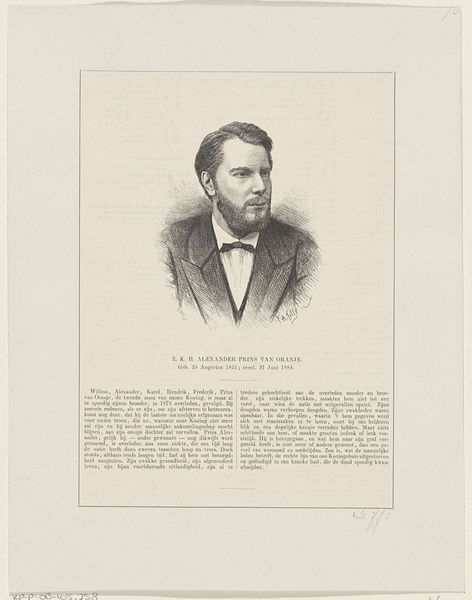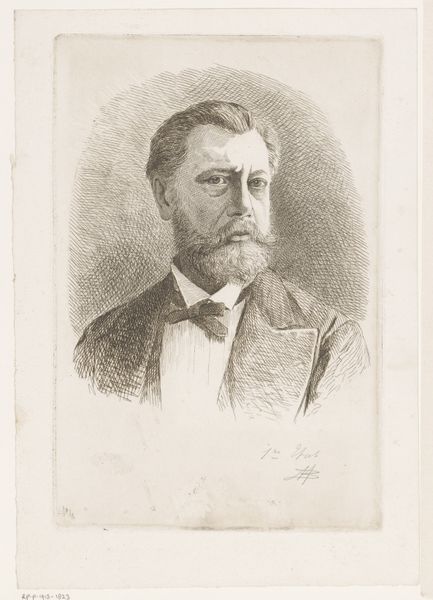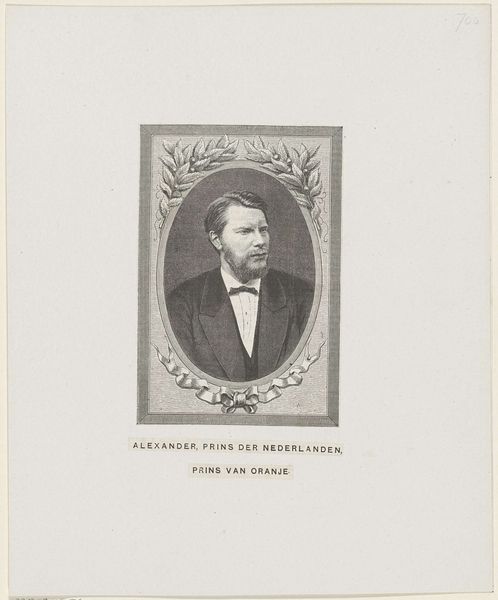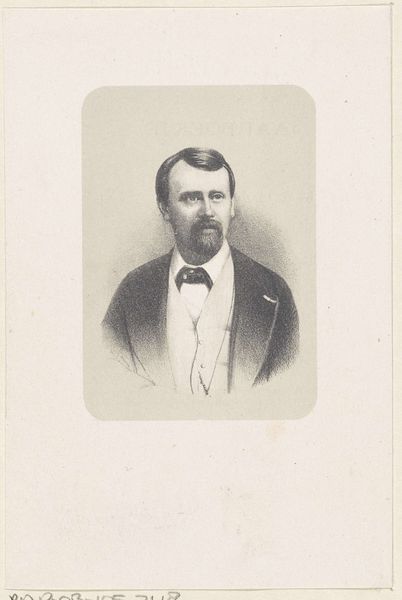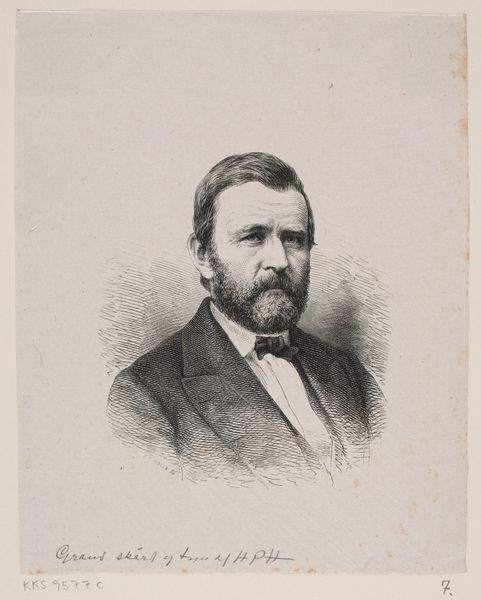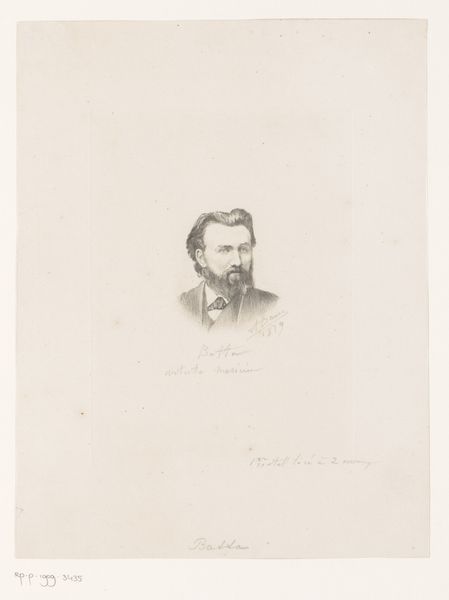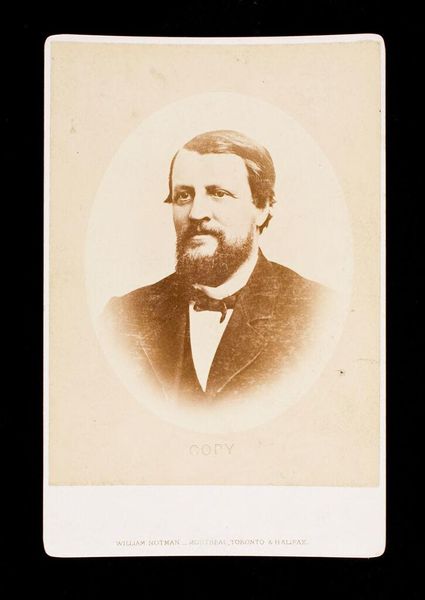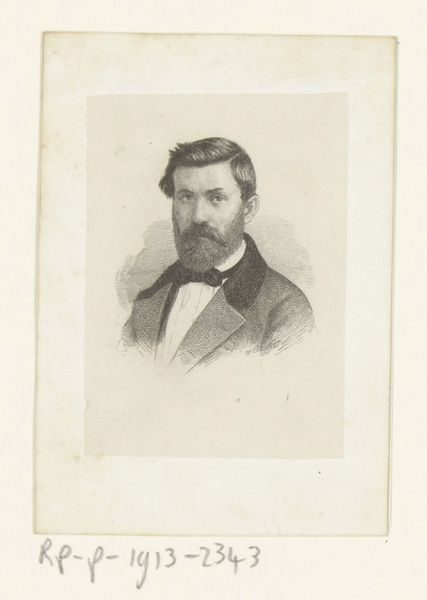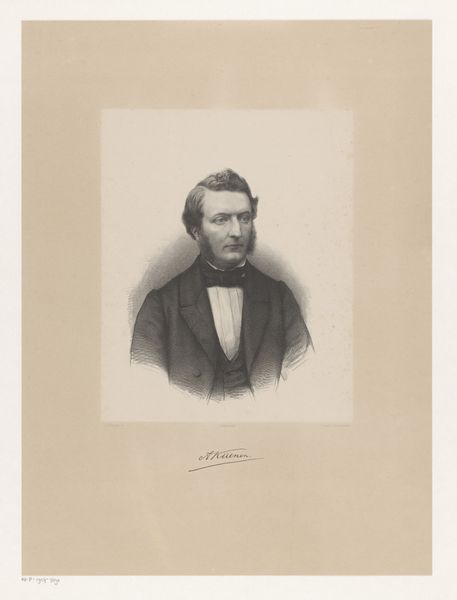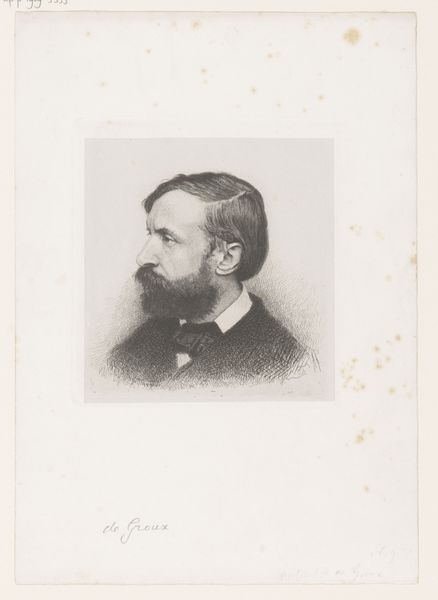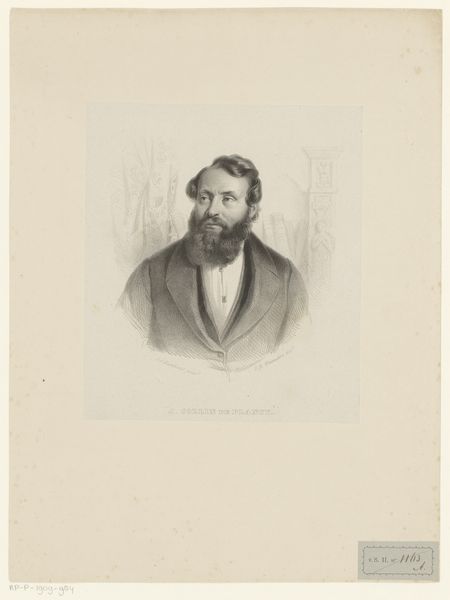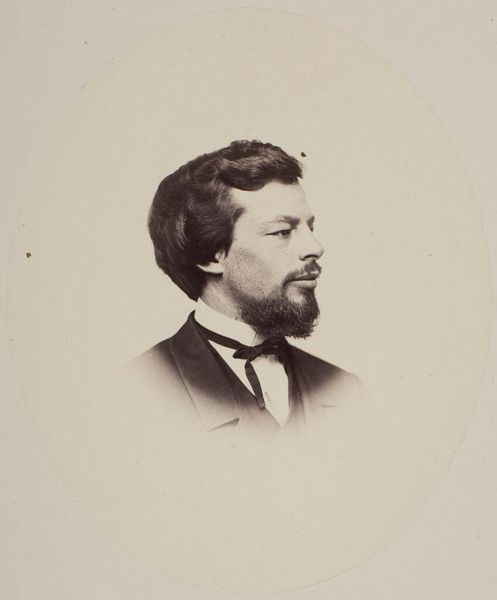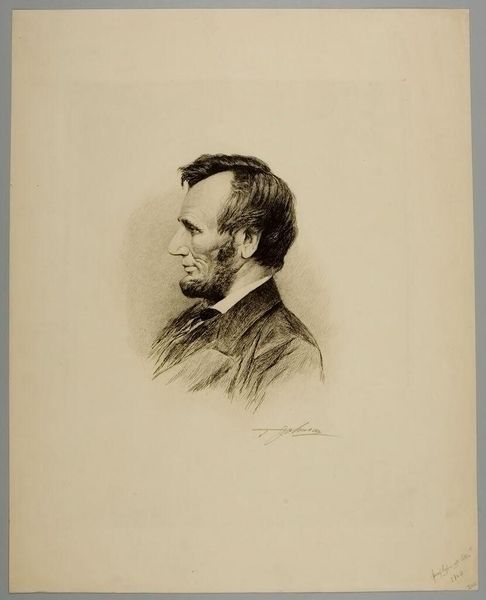
print, engraving
#
portrait
#
aged paper
# print
#
old engraving style
#
history-painting
#
engraving
#
realism
Dimensions: height 183 mm, width 146 mm
Copyright: Rijks Museum: Open Domain
Curator: Here we have an engraving entitled "Portret van Alexander, prins der Nederlanden," or Portrait of Alexander, Prince of the Netherlands. Though the artist is anonymous, the piece is dated between 1884 and 1949. What are your initial thoughts? Editor: It's striking how this medium—engraving—lends the portrait such a stoic and almost severe aura, despite the subject’s seemingly soft features. The detail in his beard and suit is remarkable. Curator: Indeed, the detailed lines of the engraving capture the materiality of the Prince’s clothing, his facial hair. Consider the labor involved in creating such an image, each line carefully etched into the plate. The printing process itself becomes a subject. Think also of the economics behind this type of portraiture; this print would have circulated, making his image accessible to a wide audience, far beyond the elite circles. Editor: Precisely. It speaks to the power dynamics at play. Reproducing this image makes it a symbol of power and perhaps even national identity that’s being circulated for popular consumption. And what about the message it sends about the Netherlands’ image during the late 19th and early 20th centuries? What aspects of monarchy were they promoting during this period of history? Curator: Good point. This type of imagery becomes part of a manufactured consent through representing the establishment’s control to a mass-produced image. What kind of symbolic meaning could this have had to people who are looking at this object? This simple artwork provides a fascinating commentary on production methods and political intentions. Editor: The portrait reminds me how the history of representation is entwined with societal control. The fact that is in print allows more of an expanded reach in ways that affects us to this very day through continued representations of gender and authority. Curator: I hadn’t quite thought of the ways printmaking served as a mass distribution technology, allowing for carefully managed projections to take hold! It really highlights how techniques can be more than a technical question. Editor: Agreed, analyzing historical art from this perspective reveals so much about the times they were made. It makes you think!
Comments
No comments
Be the first to comment and join the conversation on the ultimate creative platform.
